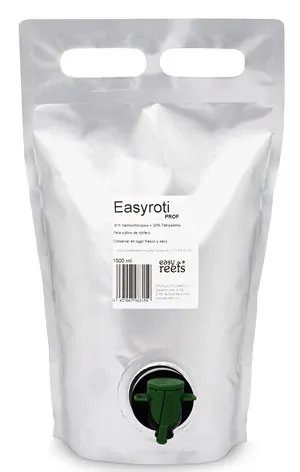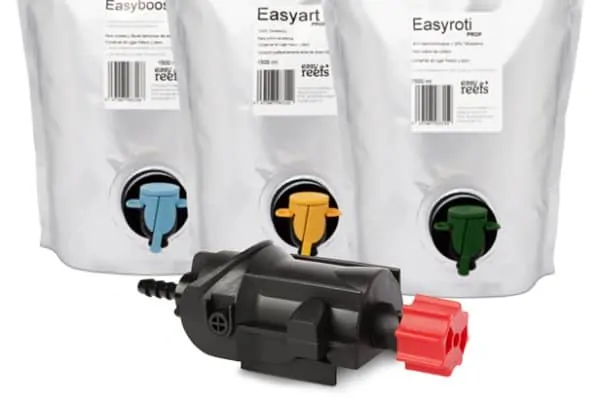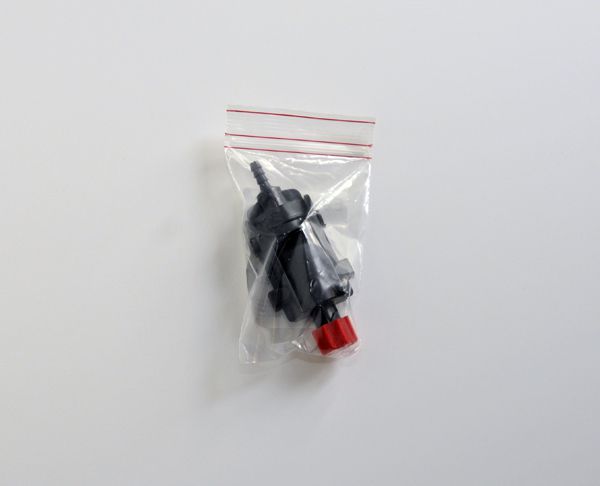EasyRoti Prof – 1500ml
€70,00
EasyRoti Prof rotifer culture two easy reefs® microalgae species are used: Nannochloropsis (80%) +Tetraselmis (20%)
Out of stock
EasyRoti Prof – 1500ml
For rotifer culture, two easy reefs® microalgae species are used: Nannochloropsis (80%) and Tetraselmis (20%). The dosage will depend on the number of rotifers you have reached. On average, you can expect a consumption of 4 ml EasyRoti per litre of rotifer culture per day, as 25% of the rotifers will be harvested each day.
To maintain a healthy rotifer culture, please follow the directions below:
- Materials needed:
- Three cylinder flasks of 2 L with slow bubbling.
- Rotifer inoculums.
- Food needed:
- easy reefs® Nannochloropsis (80%) and Tetraselmis (20%).
- Culture cycle from strain: 5 days.
- Recommended sea water density: 1019, although they can be cultured well up to 1022.
- Culture temperature: 22ºC to 28ºC, with an optimum temperature of 24ºC.
To filter the rotifers, use a 50 micron net. Once you start the culture, you will be able to harvest rotifers after six days. You will have one flask dedicated to the “strain” and another one for the “production” culture.
The following information outlines the ideal dosage, assuming that the rotifer density is optimal. However, it is important to note that the amounts of microalgae added may not always meet the rotifer demand, especially since rotifer counts are often not measured in aquariums. If the culture water appears clear, it may indicate that the microalgae quantity is insufficient. Additionally, if rotifers go without food for more than four hours, you may see a decrease in both egg production and overall population growth. Therefore, it is essential to ensure that the rotifers always have adequate food.
Rotifers are quite sensitive to changes in water parameters, and a decline in water quality can negatively impact the population. If you notice excessive dirtiness in the cylinder, it is advisable to filter the rotifers and start a new culture in a clean flask, adding the necessary amount of microalgae.
The intensity of the green color in the flask will indicate the required amount of microalgae. With time and experience, you will learn to establish your own feeding protocols based on this observation. There is no significant difference between using live microalgae or EasyRoti as food.
To maintain a consistent culture, place a glass tube with gentle air bubbling (5-10 bubbles per second) in the graduated flask used for the rotifer culture. This air bubbling will help create a homogeneous mixture. However, be cautious, as excessive water movement may cause rotifers to lose their eggs, preventing them from hatching.
It is generally recommended to feed rotifers twice a day. However, due to time constraints, they are often fed just once a day.
| Weight | 1,5000 kg |
|---|---|
| GTIN | 8437007983159 |



